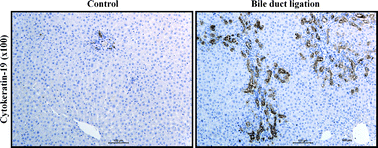A reversible model for periportal fibrosis and a refined alternative to bile duct ligation†
Abstract
Bile duct ligation (BDL) is commonly employed as a model for hepatic periportal fibrosis. However, BDL is limited in that it is a severe procedure; is irreversible in practice; the severity of injury cannot be modulated and the procedure is associated with high mortality.


 Please wait while we load your content...
Please wait while we load your content...